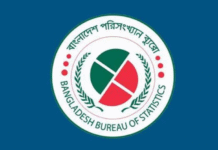
The SEQAEP project has also provided quality education to more than 1 million students in some 7,000 secondary schools from 125 upazilas in the country. So far, the disbursement ratio for the World Bank’s IDA financing has reached 97 percent, said a World Bank press release on Monday.
The SEQAEP provides incentive awards to students, teachers and schools and extends support to students in English and Mathematics in order to improve academic performance.
The release said a satisfactory progress has been recorded in implementation of the project. So far, about 3.8 million schooling years (for 1.8 million beneficiary students) have benefited from the targeted stipends and tuition for secondary education in Bangladesh, and 57 percent of these beneficiaries are girls.
Another 0.83 million students benefited through performance-based monetary incentives, additional classes in English and Mathematics, and the Reading Habit Programme.
It said the Monitoring and Evaluation Wing (MEW) under the Directorate of Secondary and Higher Education (DSHE) has completed the first-ever systematic assessment of student learning assessment in secondary education.
The findings of this rigorous impact evaluation study were disseminated in April 2013 and suggest that there is a significant causal impact of the PMT stipends programme on secondary school enrolments.
The net impact of new stipends scheme on secondary schooling enrolment is estimated to be 20 percentage points, and the effects are higher among children from socioeconomically disadvantaged families.
The government and the World Bank have jointly agreed to prepare a follow-on SEQAEP Additional Financing (AF) project to scale up the initiative and bring more schools and upazilas under the coverage.
The proposed AF will extend the current SEQAEP project to December 2016 and implement the expanded project activities (across more schools and students within SEQAEP upazilas) to deepen the impact of a well-performing project.









